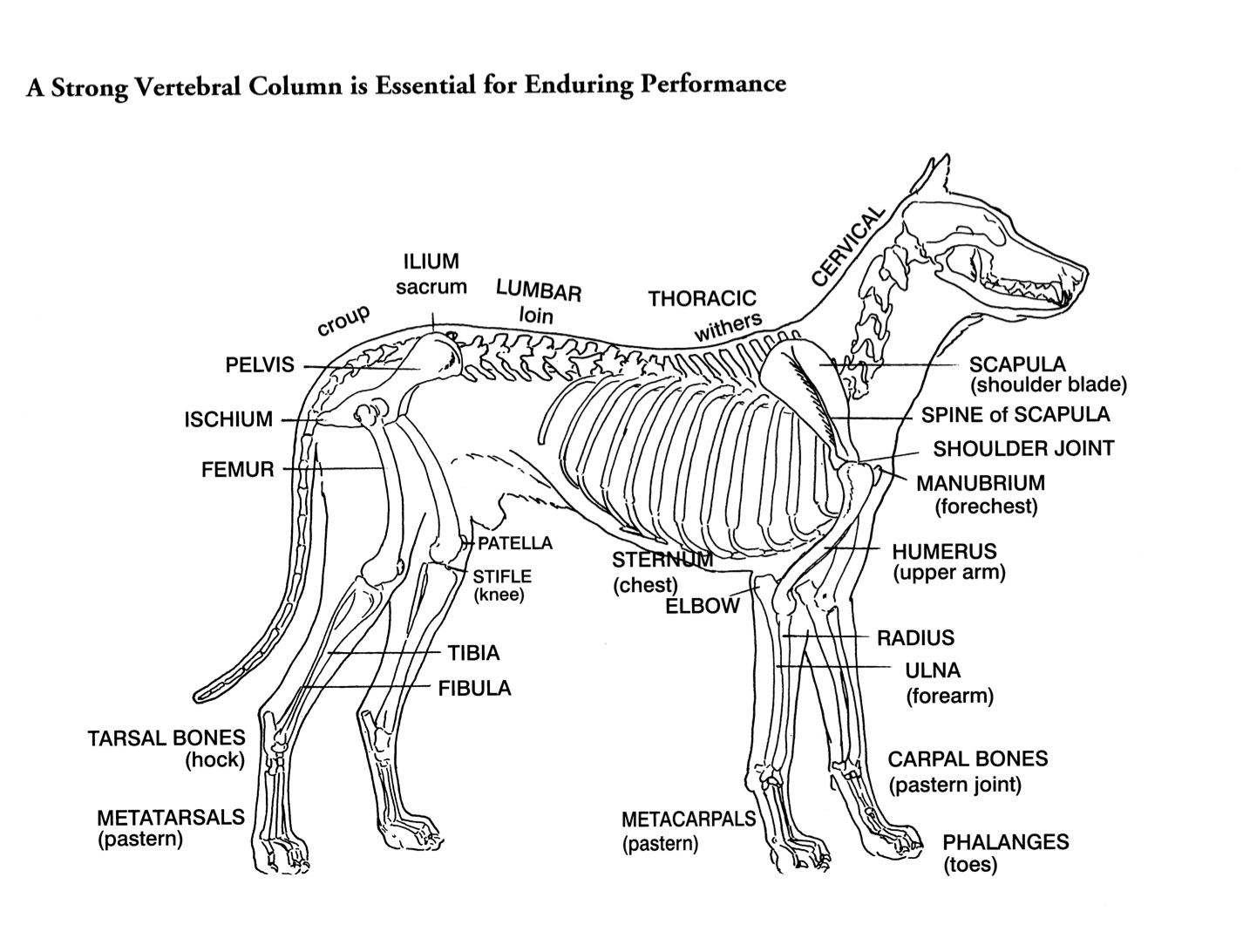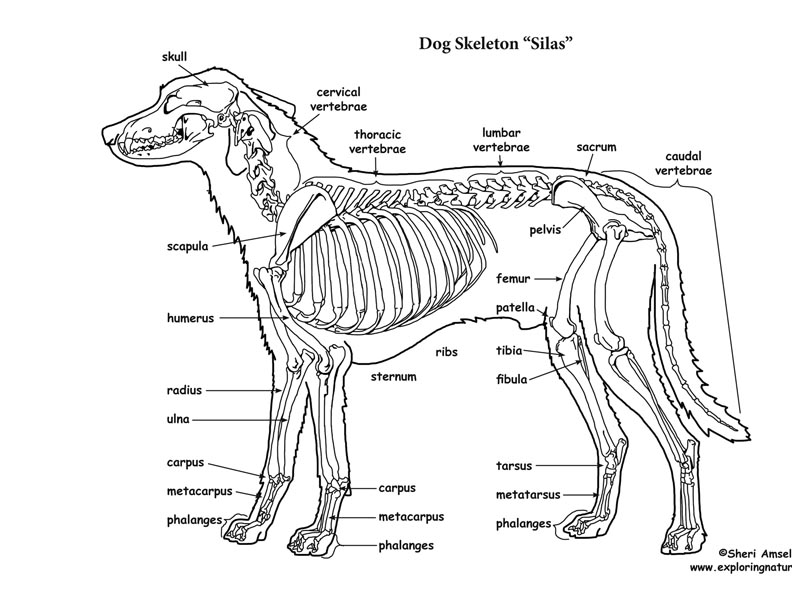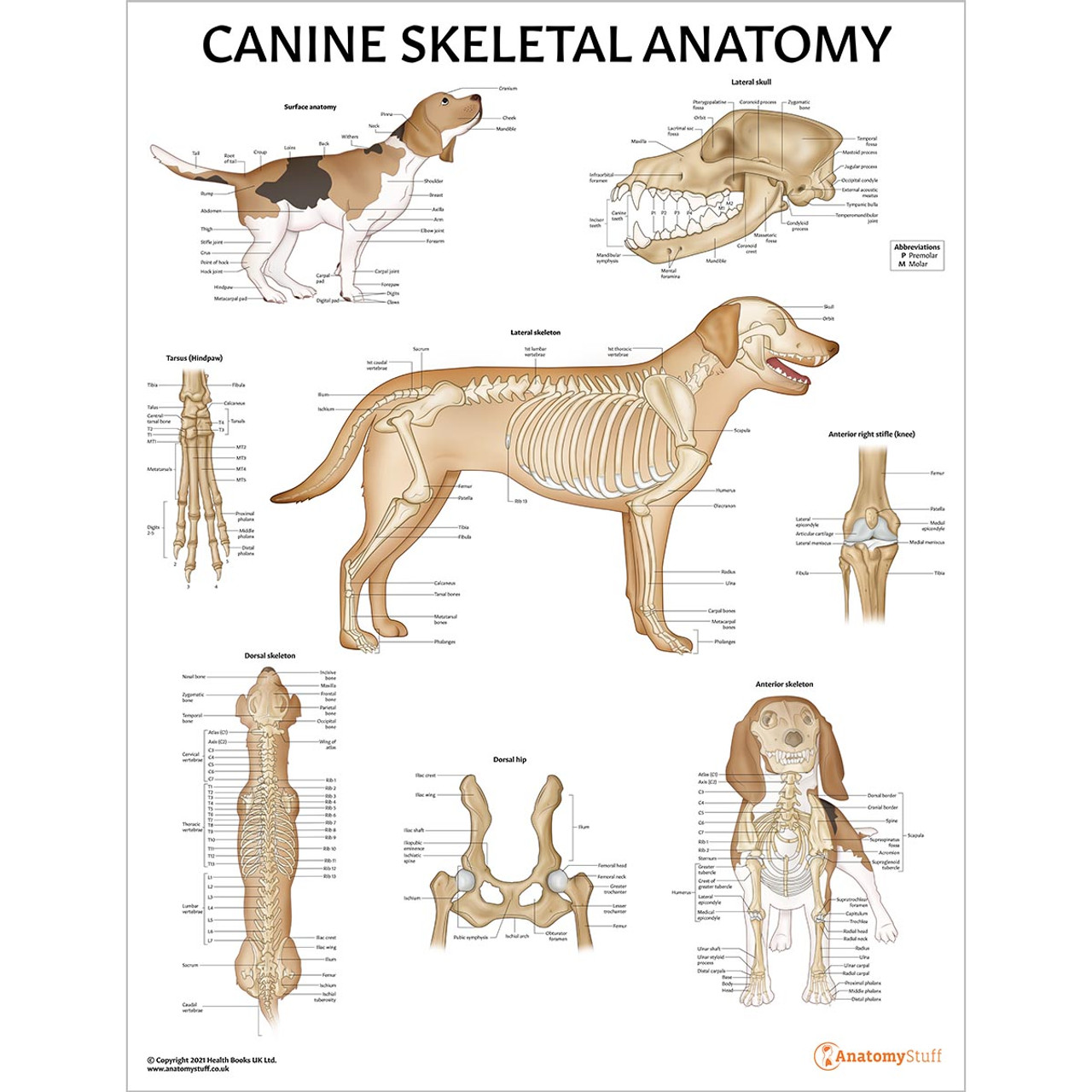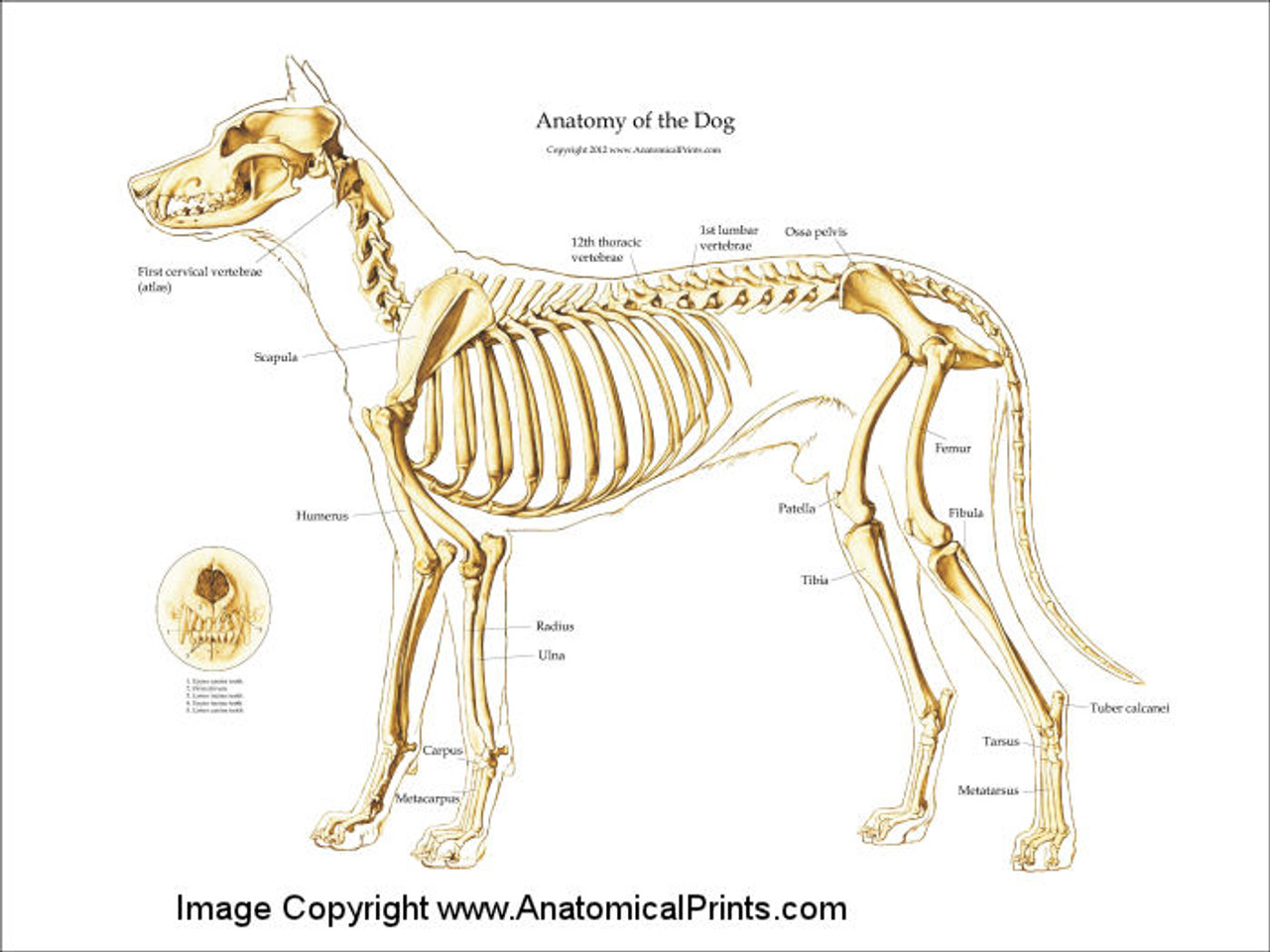
Labeled atlas of anatomy illustrations of the dog Bones Skeletal system Molecular Shapes
The skeleton is composed of the hard tissues of the body, and its primary functions are to support the body, to provide a system of levers used in locomotion, to protect the soft organs of the body, and to produce red blood cells (hematopoiesis). A dog's skeleton is formed so the dog can run fast, hunt and chase.

Labeled atlas of anatomy illustrations of the dog Bones Skeletal system Dog skeleton
A dog's skeleton is made up of many different bones, which provide structure and support for their body. Dogs have over 300 bones in their body, which is more than humans who have around 206 bones. Their skeleton includes their skull, spine, ribcage and limbs. Dogs have four legs that are designed to help them move quickly and efficiently.

Dog skeleton Dog skeleton, House training dogs, House training
Whereas giant breeds can take between 18 months and 2 years for their growth plates to fuse. Speaking of skeletons, a dog has 320 bones in their body (depending on the length of their tail) and around 700 muscles. Muscles attach to bones via tendons. Depending on the breed of dog, they will have different types of muscle fibers.

Vintage 1935 Dog Veterinary Print Skeleton Of Dog Anatomy Of Dog Canine Skeleton Dog Bones Book
1. Dog Anatomy: A Pictorial Approach. Dog Anatomy: A Pictorial Approachby Peter C. Goody offers clear and precise illustrations of the skeletal-muscular system of canines. Each diagram is meticulously labeled with little additional text since the book truly takes a pictorial approach to the topic.

Helen King on Structure Evaluation Susan Garrett's Dog Training Blog
Anatomy atlas of the canine general anatomy: fully labeled illustrations and diagrams of the dog (skeleton, bones, muscles, joints, viscera, respiratory system, cardiovascular system). Positional and directional terms, general terminology and anatomical orientation are also illustrated.

FileDog anatomy lateral skeleton view.jpg
Anatomic Planes. The main planes of motion for dogs are as follows (see Figure 5-1): • The sagittal plane divides the dog into right and left portions. If this plane were in the midline of the body, this is the median plane or median sagittal plane. • The dorsal plane divides the dog into ventral and dorsal portions.

Dog skeleton 101 Dog Anatomy Bones Animal Hackers
Canine Anatomy The Dog. Dogs are domesticated descendants of the wolf and belong to the canine species. Dogs are loyal, lovable animals that make ideal companions. Their physical characteristics and temperaments vary from breed to breed, but they all share anatomical characteristics and exceptional, highly developed senses. Canine Skeleton

Dog Skeletal Anatomy
It provides information about a dog's skeletal, reproductive, internal, and external anatomy, along with accompanying labeled diagrams. After mating, dogs experience something called a copulatory tie, wherein they remain in the coital position. The male dog dismounts the female at this time. The dogs can remain in this position from a few.

Dog skeleton with major bone elements labeled (Davis, 1987, p. 54;... Download Scientific Diagram
See if you can find where these bones are on. Eye Socket Occiput Or Orbit Cervical Vertebrae Atlas Skull Thoracic Vertebrae Lumbar Vertebrae Axis Sacrum Pelvis. Hip Joint. Shoulder Blade or Scapula. Humerus Ribs Femur. Radius Ulna Stifle Joint. Metacarpus Tibia Or Pastern Fibula Carpus. Phalanges or Toes Coccygeal Vertebrae.

Canine Skeletal Anatomy Laminated Chart Dog Skeleton Poster
ISSN 2534-5087. This veterinary anatomy module of the dog contains 218 illustrations dedicated to the canine osteology anatomy. Here are presented scientific illustrations of the canine skeleton, with the main dog's bones and its structures displayed from different anatomical standard views (cranial, caudal, lateral, medial, dorsal, palmar..).

Dog Skeleton Anatomy by TheDragonofDoom on DeviantArt
Dog anatomy comprises the anatomical studies of the visible parts of the body of a domestic dog.Details of structures vary tremendously from breed to breed, more than in any other animal species, wild or domesticated, as dogs are highly variable in height and weight. The smallest known adult dog was a Yorkshire Terrier that stood only 6.3 cm (2.5 in) at the shoulder, 9.5 cm (3.7 in) in length.

Canine Skeleton Poster Clinical Charts and Supplies
Animal Anatomy (Veterinary Diagrams) Dog Skeletal Anatomy. High Resolution PDF for Printing. Click Here. Link to More Information About This Animal. Click Here. Citing Research References. When you research information you must cite the reference. Citing for websites is different from citing from books, magazines and periodicals.

Anatomy of a male dog crosssection, showing the skeleton and internal organs. Colour process
This module of vet-Anatomy presents an atlas of the anatomy of the head of the dog on a CT. Images are available in 3 different planes (transverse, sagittal and dorsal), with two kind of contrast (bone and soft tissues).

Dog skeleton Diagram Quizlet
Below is a diagram of a dogs anatomy: The coat of a dog varies in colors ranging from all black, brown, beige and white to others being of a mix with light or dark markings and colorations on different parts of their bodies and faces. Their fur ranges from short, smooth fur to long shaggy fur to soft and fluffy to hard and coarse.

Anatomy of dog skeleton with labeled inner bone scheme vector illustration Dog skeleton
In the big picture, the dog skeleton is made of two basic parts: axial and appendicular (limbs). Axial skeleton = head (skull) + the spine (made of vertebrae) + ribs + sternum. Appendicular = forelimb bones + hindlimb bones. The axis of the dog skeleton is composed of the skull, spine (made of vertebrae), ribs and sternum (made of sternebrae).

Dog Anatomy Dog Skelton
2021 Ultimate Guide to Dog Anatomy. As the pace of veterinary advancement accelerates, even the most experienced veterinary teams are challenged to keep up with all the changes that impact their practice.. potential outcomes and prognoses and tools e.g. anatomical diagrams, clinical formulas and programs and home care videos; Enhancing the.